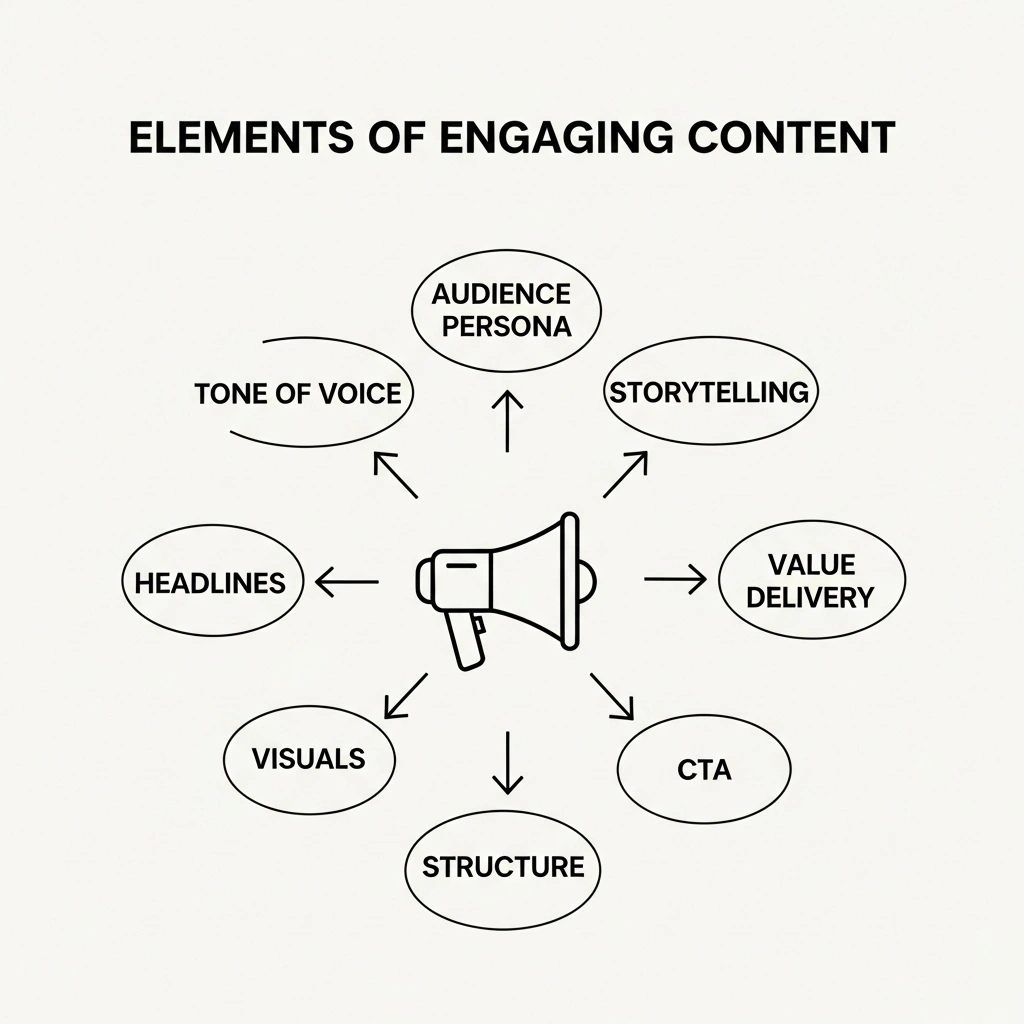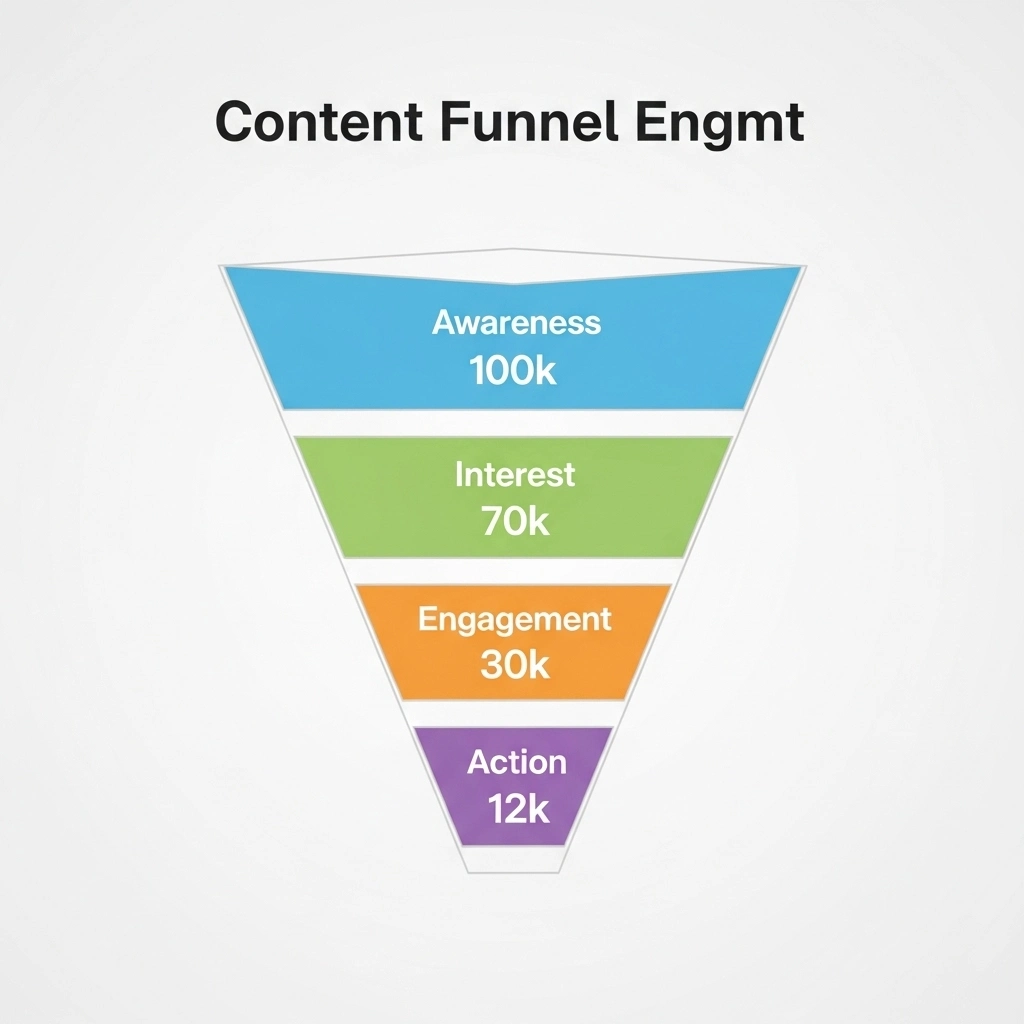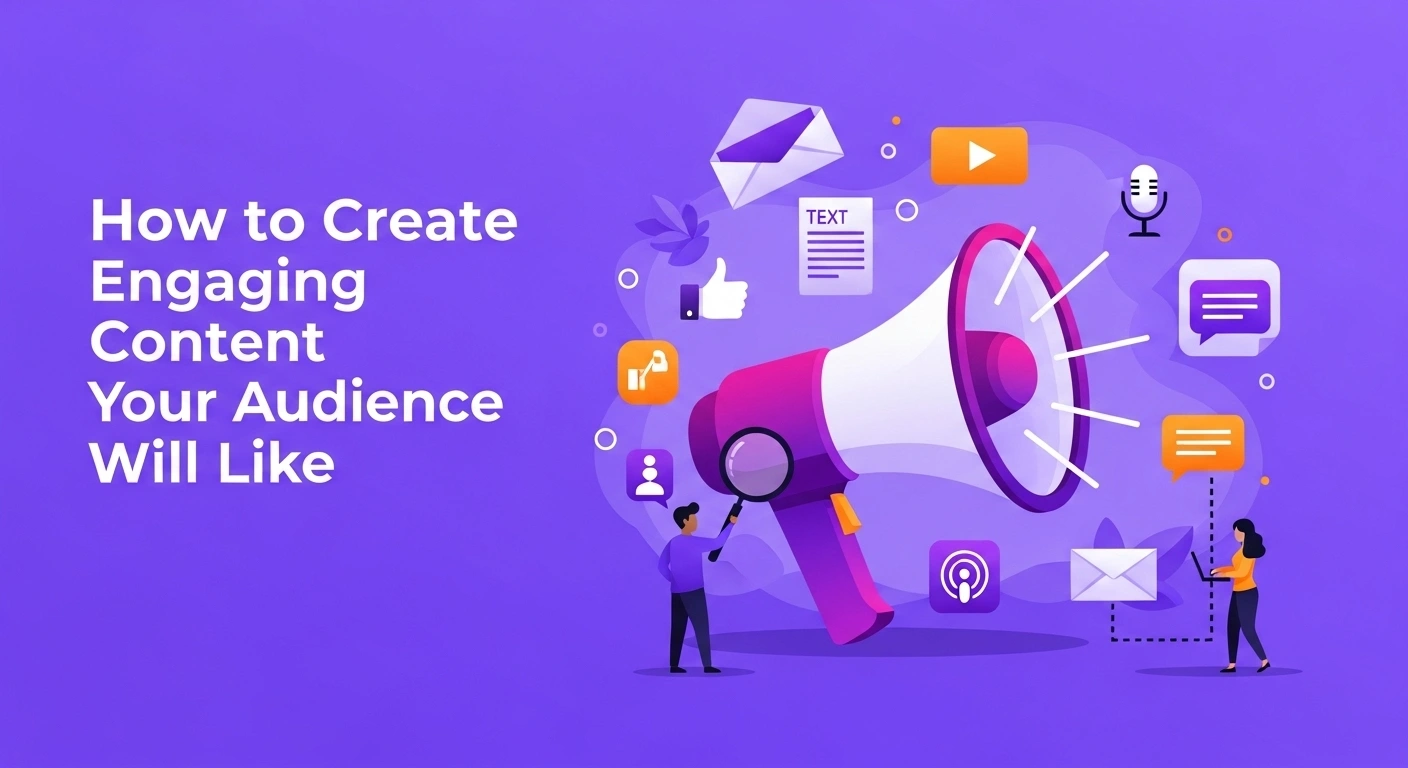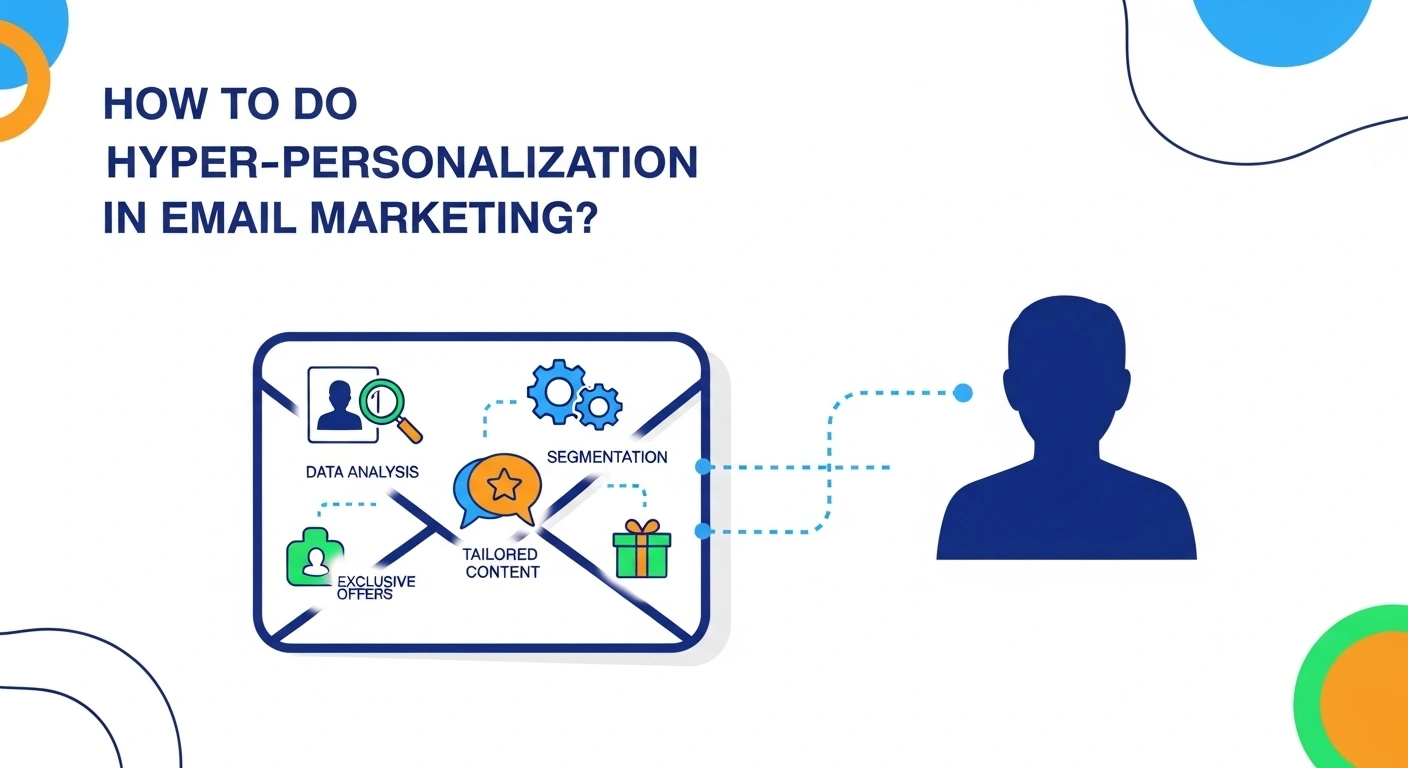- 1. Know Your Audience Inside Out
- 2. Tell Stories, Not Just Facts
- 3. Focus on Value, Not Just Virality
- 4. Use Eye-Catching Headlines
- 5. Write Like You Talk
- 6. Break It Up Visually
- 7. Add Visuals and Multimedia
- 8. Include a Clear Call to Action (CTA)
- 9. Be Consistent With Your Voice
- 10. Experiment, Test, and Improve
- Conclusion
It is easy to make content, but producing content that your audience can care about? That is little bit difficult . It is possible to post every day, keep up with the trend and yet feel like speaking into nothingness. When your content is not getting likes, comments, or shares, not only can this be frustrating, but it also means that you are not doing what you need to do to appeal to your audience.
In a digital, crowded world, engaging content is the difference between being noticed and overlooked. It creates credibility, makes people talk, makes you visible on platforms, and makes them addicted to your content. So, to recap it all, engagement is the pulse of any good content strategy. To master tone, structure, and voice across content types, check out the Content Marketing Course, it’s packed with practical frameworks.
Master the art of content marketing with our course. Boost your brand’s visibility and engage your audience effectively through proven strategies and expert insights.
The silver lining? It has nothing to do with guessing and going viral by accident. This guide will reveal the 10 tested strategies to produce content that will make your readers wish to read, reply to, and share it. Here is what works and how to make it work.
1. Know Your Audience Inside Out
Unless one knows who they are addressing, they will not hit the mark with their content. To ensure the greatest interest of the audience, the most engaging creators invest in knowing about their needs, the obstacles they face, and what motivates them.
The first step would be the creation of in-depth audience personas according to age, occupation, interests, and internet behavior. One should also use such tools as Google Analytics, surveys and comments to seek the answers.
Social listening, or monitoring the nature of your audience speaking at places such as Twitter, Reddit, or at specific niche forums, can tell you what their lingo consists of and what they are interested in. The goal is to speak with your audience, not at them. When your content reflects their voice and pain points, it feels more personal and that connection is what drives engagement.

For a deeper understanding of how artificial intelligence can help you uncover insights and personalize content effectively, explore this guide on AI for Content Creation.
2. Tell Stories, Not Just Facts
Facts tell but stories sell. When you want your content to stick, wrap your message in a story. People are constantly hard-wired to think of stories better than figures and bullet points. No matter what you are writing, a blog post, social caption or video script, think about using a brief anecdote, customer experience or personal experience that demonstrates your idea.
You need not be a novelist. All you need do is to have a beginning, a middle, and an end. Familiar pain and real-life drama create an emotional connection, which makes the audience sympathize with the story. The best stories aren’t always the most dramatic, they’re the ones your audience sees themselves in.
3. Focus on Value, Not Just Virality
Trend chasing will get you an audience but adding value will get you a following. Good content either answers a question or teaches something useful that solves a real problem. It takes furthermore into entertainment in order to provide insight or action on the part of the audience. The first question to be asked before coming up with anything is, what will someone get out of this? When value is delivered, the piece of content can share itself without tricks.
Having said that, value and creativity are not mutually exclusive: there is no reason behind being scared to format your educational content in interesting ways. But make sure there’s real substance beneath the surface. Prioritize helping your audience over impressing them, and engagement will follow naturally.
One of the most efficient ways to increase your content’s value is by repurposing it across platforms and formats. Learn how to do this strategically in Repurposing Your Blog Content.
4. Use Eye-Catching Headlines
Your headline is the first impression, and often the only one that counts. Though a very large number of individuals read the headlines, only a small percentage clicks through. An effective headline creates curiosity, jots a benefit or a promise, and a question that your audience needs answered.
There are lists like, for example, 7 tips on how to do something or how-to articles, and headlines that debunk something. Put in power words, such as, proven, simple, or unexpected, and make the structure tight and scanable. Avoid clickbaits. Such a headline will be clicked, but will ultimately destroy credibility. A clear, correct and convincing headline is the most effective kind.
5. Write Like You Talk
Rigid, formal copy is not relational- particularly in the internet. When you write in the conversational style, it will make the readers feel that you are talking directly to them and not talking about them as a lecture. It does not imply that you have to be too informal and involved in slang. It involves being clear, simple and human in language.
Use contraction, use rhetorical questions, change sentence lengths so as to imitate natural speech. Get rid of jargon unless you know your listeners want it. Your content will be more convincing and make your audience to read more, respond, and share when it sounds more a chat. And whenever you would not say it out loud, think twice about writing it down.
6. Break It Up Visually
Even the most amazing content may start to seem too heavy to read when presented in a form of a wall of text. Structure matters. To lead the reader, use short paragraphs, emphasis by bolding the text, bullet points, numbered lists and subheadings.
White space provides eyes with space to rest particularly on mobile. If you’re publishing content on social platforms, structure and formatting become even more crucial. Here’s a helpful overview of Social Media Content Best Practices to guide your design and tone choices.
Individuals will skim and will then commit to a full read - assist them to access what matters to them fast. Effective organization does not only give a better appearance but also results in a better performance. It minimizes exit rates and makes your audience stay longer. Consider formatting not as enhancement, but as itself content.
7. Add Visuals and Multimedia
There is nothing wrong with plain-text content, it can still be effective; however, text stands no chance against picture-enhanced content. Showing a image, infographic, GIF or a short video clip gives your message more weight as it helps people remember your word. It also makes it more likely that one will pause their scroll.
Images have the ability to simplify complicated concepts, create an emotional appeal or give a visual relief when reading. Wherever possible, make your own imagery consistent with your brand. If not, use stock imagery strategically. Multimedia isn’t just for social posts either, it works in blogs, emails, and presentations. Use visuals to support, not distract from your message.
8. Include a Clear Call to Action (CTA)
What should a person do after he or she consumes your content? Unless you tell them, they will probably not do anything. A good CTA helps move the audience on to the next thing, the next action, be it leaving a comment or downloading a resource or subscribing to a newsletter, or sharing the post.
The trick is to ensure that you keep your CTA straightforward, concrete and pertinent. Never use general words, such as, check out our site. Instead, say something like “Download the free checklist to start planning your next campaign.” Good CTAs do not register as a sales push to the reader, but rather a suggestion that fits into what the reader is interested in.
9. Be Consistent With Your Voice
Behind the content is your very own brand voice and this voice contributes to the familiarity and credibility of your content. It should not change depending on who you address or through which channel to use a tone; whether it is witty, informative, friendly or professional. Consistency in tone and delivery also contributes to better user retention.
Consider this as visiting a friend, and every time you pay them a visit, they have altered their personality, you would most likely not entrust them. That is how inconsistent content is to the readers. Build a tone guide or brand voice document when you get a chance and use it frequently. With time, a clear and consistent voice gets to be part of your brand.

10. Experiment, Test, and Improve
Even those professionals in content creations and most successful are not always spot on at the first attempt. Many times, the distinction between good and great content is iteration. Monitor how your followers react to the various formats, headlines, time of posting and platforms.
Test A/B whenever possible- particularly with the subject line of an email, or advertising copy. Want to build a repeatable testing and optimization framework? The Digital Marketing course covers A/B testing, audience analytics, and campaign adjustments in depth.
What works for one audience might flop with another, so rely on real data, not assumptions. Engagement is a moving target, but a willingness to test and adapt helps you stay relevant. Treat every piece of content as a learning opportunity, not a finished product.
Conclusion
Viral luck is not essential to produce engaging content, you need to look at strategy and be clear, and you need to understand your audience. Whether it is writing effective headlines and making stories relatable or working in graphics and communicating in a conversational tone, all the above strategies help in gaining attention and establishing a long-term bond.
Keep in mind that engagement is not reached, it is grown. Tune into what your audience resonates to, seek feedback and remain in a position to experiment. The greatest and most successful people at creating content are not perfect, they are simply curious, and easy to change.
Now that you have a set of proven strategies, don’t try to apply everything at once. Pick one tip that resonated with you and put it into practice this week. Small changes, applied consistently, can lead to big results.





